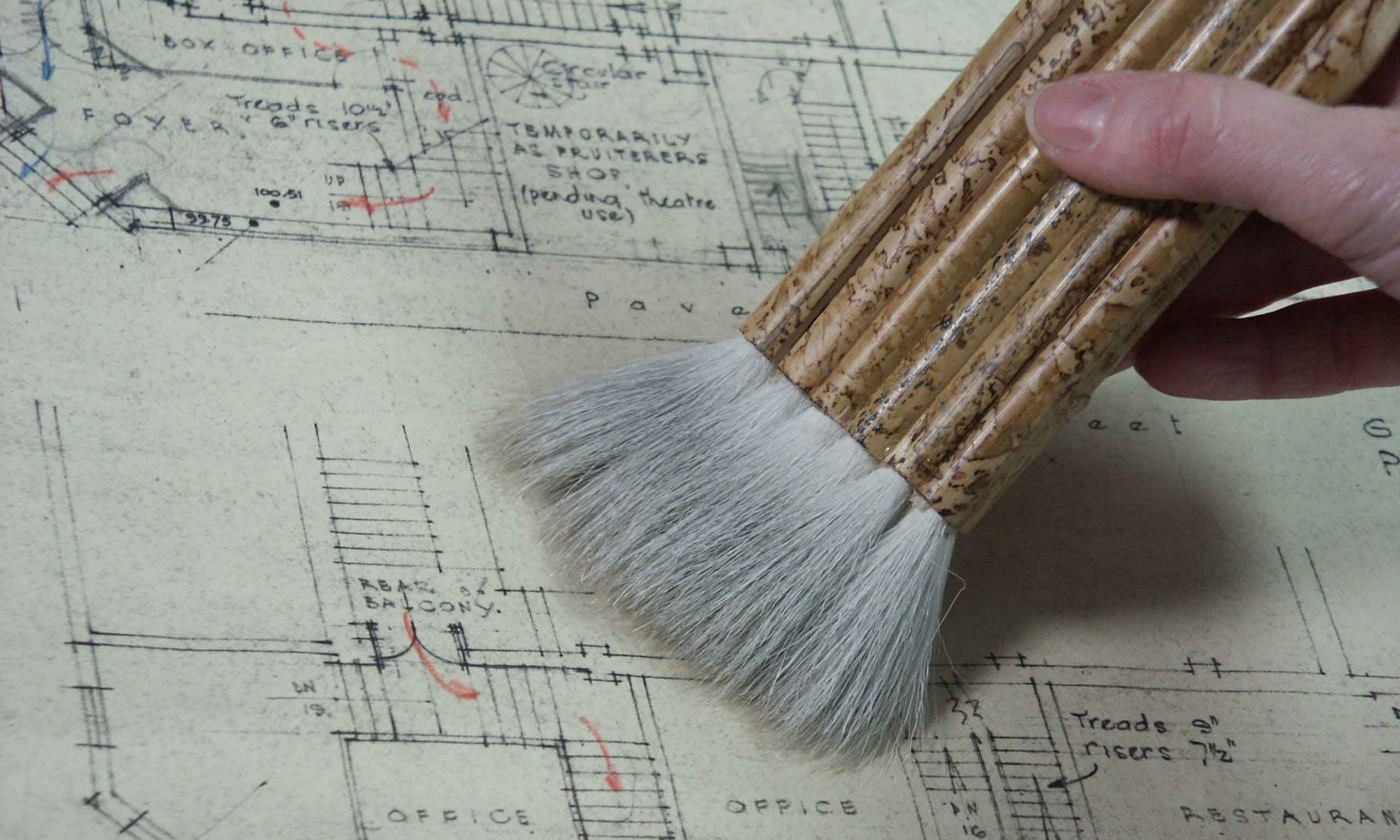The session start time has been moved to 12,30, so the first thing we did was have lunch in the Huntley Room. Then we visited the boxing machine, located in its room high up in the building and full of light. We met Amy, who operated the machine, and watched it robotically crease and cut out the flat box shape. ‘Why is it called a Wrap Lock box? – because it wraps round the book and then locks shut with its tab.
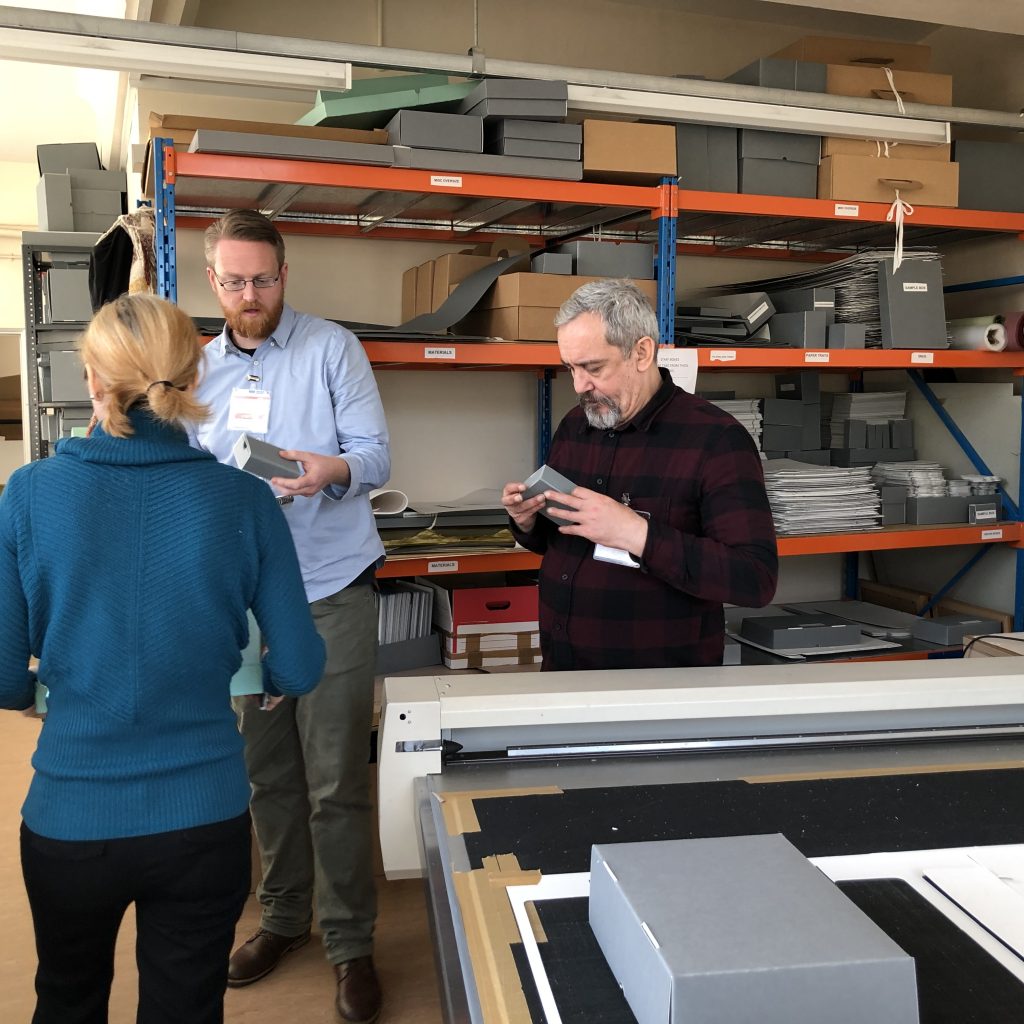
It was fantastic to see people become increasing interested in different box shapes, and to share the pleasure of receiving a small archive box as a present. A box you have seen being made is fundamentally different from one purchased from a newsagent.
Travelling through LMAs back regions, we found ourselves in the Conservation Studio. There was an air of anticipation as people wrapped the boxes they had measured last week round the St Luke’s Hospital volumes. Then satisfaction all round as the books fitted snuggly into their new homes. We discussed how the boxes protected the books from handling, dust and even flood water.
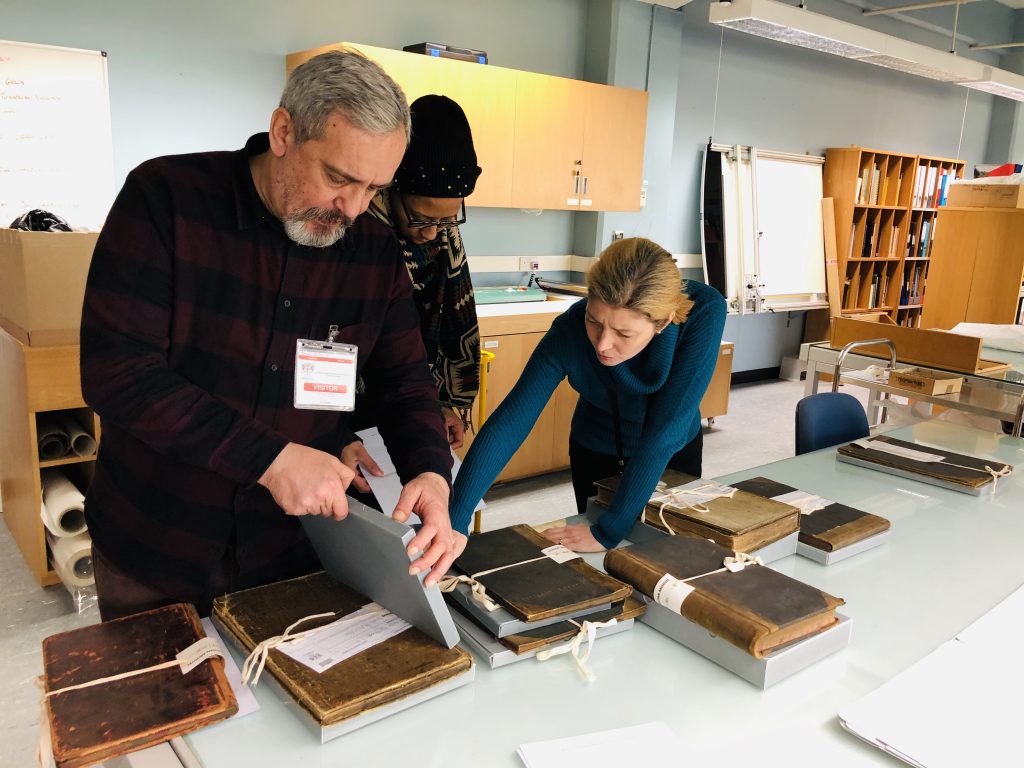
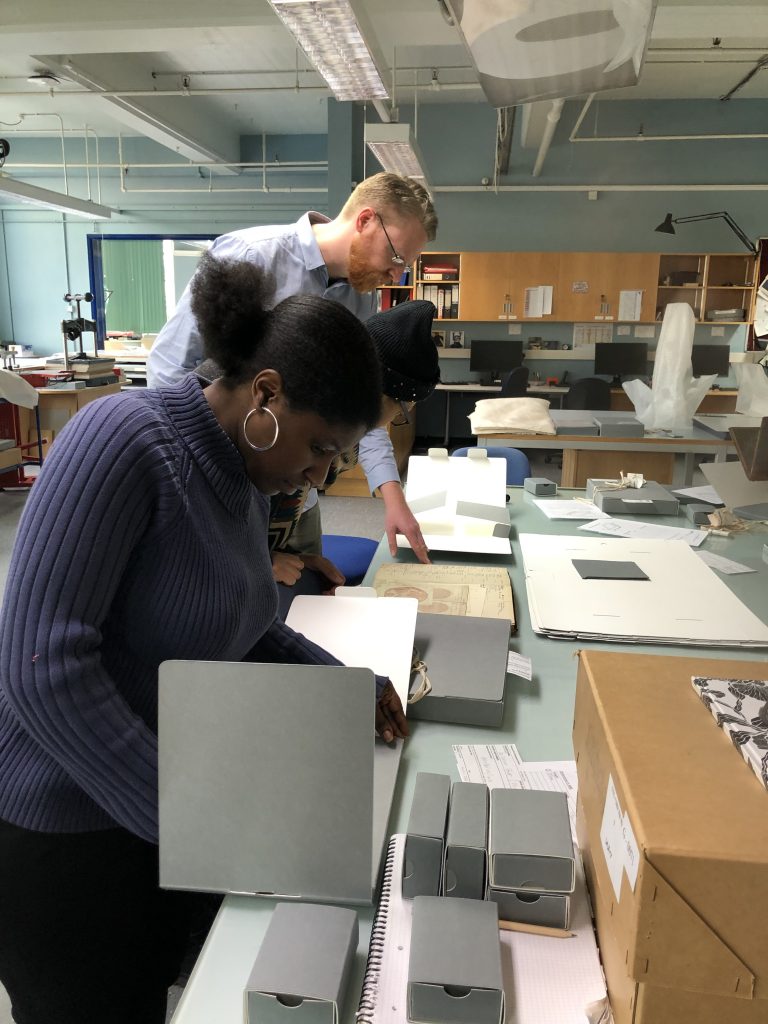
We were having a tea break in the Huntley Room, when the fire alarm sounded. It was not a drill, so we congregated outside for 25 minutes while the Fire Brigade checked the building.
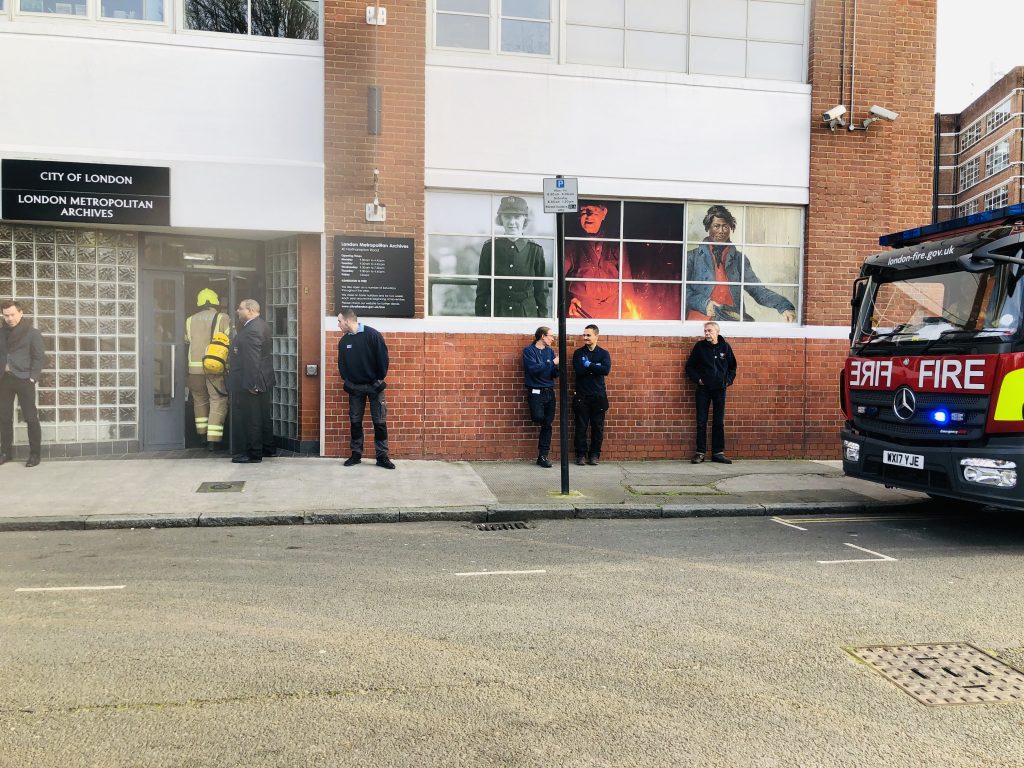
Back in the Conservation Studio, we moved on to the agents of deterioration, re-written in less technical language than used by professional conservators. At first the group looked a bit bored, maybe tired, maybe thinking they were going to get a lecture.
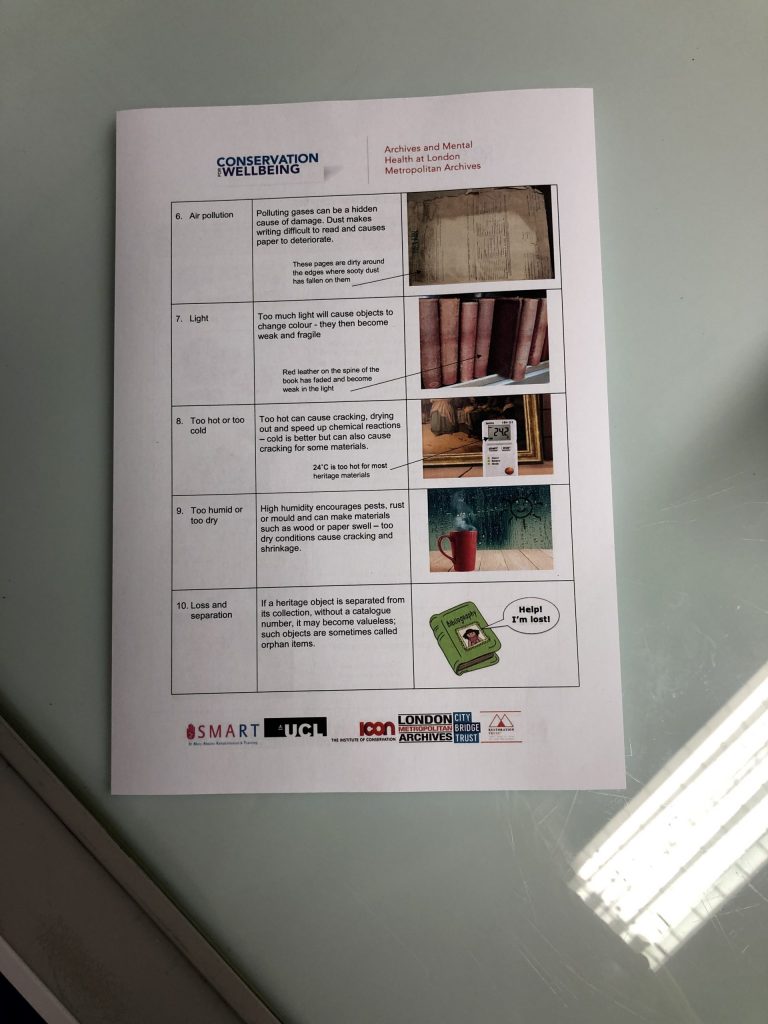
However, once we started chatting about bugs, pests, handling and fire the discussion livened up. People sat up in their chairs and started talking and looking. One person said, “do you really spend a whole day at a conference talking about pests, a whole day?” Somewhere between aghast and fascinated.
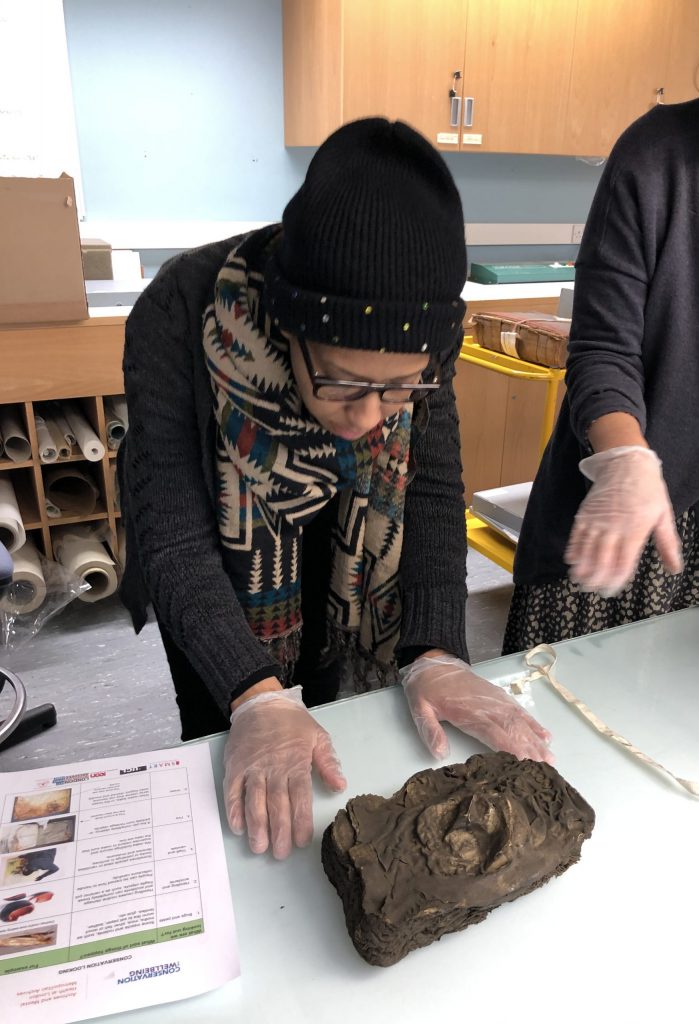
It’s easy for those of us who work in archives and museums to forget how unfamiliar it is to be behind the scenes for most people.
As a conservator and collections care manager this project is taking me out of my comfort zone, but I am enjoying it. The sessions tend not go to exactly to plan and we have to be flexible – rather like jazz; structured improvisation. And I hope that as the weeks go by the experiences and nascent research emerging from the project will be the beginning of many more C4W workshops.
Helen is a Collections Care professional and Paper Conservator, who is coordinating Conservation For Wellbeing.
